Today’s Current Affairs: 29th Jul 2023 for UPSC IAS exams, State PSC exams, SSC CGL, State SSC, RRB, Railways, Banking Exam & IBPS, etc
Table of Contents
INDIAai:

The INDIAai and Meta India signed a memorandum of understanding (MoU) to establish a framework for collaboration and cooperation in the field of artificial intelligence (AI) and emerging technologies.
- INDIAai is the National artificial intelligence Portal of India which was launched on 28th May 2020.
- It is a knowledge portal, research organisation, and an ecosystem-building initiative.
- It stands to unite and promote collaborations with various entities in India’s AI ecosystem.
- It is a joint initiative by the Ministry of Electronics and IT (MeitY),National e-Governance Division (NeGD) and NASSCOM.
- NeGD was created in 2009 as an Independent Business Division under the Digital India Corporation (a not-for-profit company set up by MeitY).
- NASSCOM is a not-for-profit industry association and the apex body for the IT and IT-enabled products and services sector in India.
- It is the single central knowledge hub on artificial intelligence and allied fields for aspiring entrepreneurs, students, professionals, academics, and everyone else.
New Millipede Species:
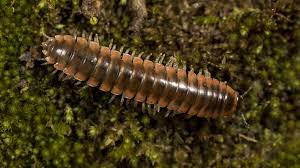
A new species of millipede has been discovered crawling underneath the city of Los Angeles in the United States
- The newly found species is a thread Millipede.
- It is about the length of a paperclip but skinny as pencil lead.
- Its scientific name is Illacme socal.
- It is translucent and sinuous like a jellyfish tentacle.
- The creature burrows four inches below ground, secretes unusual chemicals and is blind.
- It relays on hornlike antennas protruding from its head to find its way.
- Millipede are member of the arthropod class Diplopoda.
- They are cylindrical or slightly flattened invertebrates.
- The word “millipede” translates to “a thousand feet”—but while millipedes have many feet, none of them quite have a thousand.
- Their bodies are split into a number of segments, and each segment has two sets of legs that attach to the body’s underside.
- It is a detritivore, which means that it eats dead organic matter in the earth like damp wood pieces, decayed leaves, and other materials that naturally exists in their moist habitat underground.
Markarian 421 : Supermassive Black Hole

NASA’s IXPE Mission unveils twisted mysteries of the Supermassive Black Hole Markarian 421.
- Markarian 421 is a supermassive black hole firing a jet of high-energy particles aimed directly at Earth.
- It is about 400 million light-years away from the earth
- It is located in the constellation Ursa Major.
- Supermassive black hole have a mass greater than about 50,000 times the mass of our sun.
- These black holes are far too large to have formed from the gravitational collapse of a single star.
- These are always found at the centre of a galaxy and almost all galaxies have a supermassive black hole at its centre.
- Imaging X-ray Polarimetry Explorer (IXPE) is an international collaboration between NASA and the Italian Space Agency.
- It studies the most extreme and mysterious objects in the universe – supernova remnants, supermassive black holes, and dozens of other high-energy objects.
- It is the first satellite dedicated to measuring polarized X-rays from objects, such as neutron stars and supermassive black holes, to reveal previously hidden details of the universe.
Ureilite : Rare And Ancient Meteorite
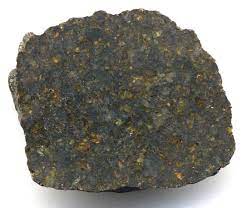
In a recent discovery, a collaborative team of scientists from Allahabad University and the University of Bern, Switzerland, revealed that the Dhala crater resulted from the collision of an exceptionally rare and ancient meteorite, known as Ureilite.
- Ureilite are a rare class of primitive meteorites that constitute just a tiny fraction of meteorites on Earth.
- It is named after the locality where the first specimen was discovered, the Novo Urei village in Russia.
- They consist of silicate rock, mostly olivine and pyroxene, interspersed with less than 10% of carbon (diamond or graphite), metal sulphides and a few fine-grained silicates.
- They contain elongated cavities generally stretched in the same direction.
- Unlike many other stony meteorites, ureilites do not contain chondrules, which are small, spherical grains that formed in the early solar system.
- Ureilites are considered primitive meteorites because their composition closely resembles the material from which the solar system formed.
Nasa’s OSIRIS-REx Spacecraft : Back To Earth
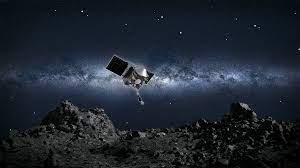
Nasa’s OSIRIS-REx spacecraft, currently on a return journey from asteroid Bennu, recently made a critical course adjustment to ensure its successful arrival back to Earth.
- OSIRIS-REx is a NASA spacecraft mission designed to study the near-Earth asteroid called Bennu.
- The name OSIRIS-REx stands for “Origins, Spectral Interpretation, Resource Identification, Security, Regolith Explorer.”
- Goal is to collect a sample weighing at least 2.1 ounces (59.5 grams) from asteroid 101955 Bennu (formerly known as 1999 RQ36) and then bring the sample to Earth.
- The mission will help scientists investigate how planets formed and how life began, as well as improve our understanding of asteroids that could impact Earth.
- It is the first U.S. spacecraft to collect a sample from an asteroid.
- It was launched on Sept. 8, 2016.
- It reached its asteroid target in 2018 and is bringing a small sample to Earth for study.
- The samples will arrive on Earth in 2023.
Urea Gold : New Variety Of Urea
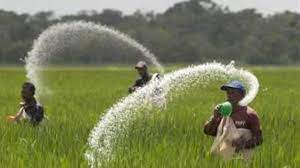
Prime Minister recently launched “Urea Gold”, a new variety of Urea, during an event in Rajasthan’s Sikar.
- Urea Gold is a new variety of Urea coated with Sulphur.
- It is being introduced to address the Sulphur deficiency in soil and save input costs for the farmers.
- Urea Gold surpasses the existing Neem-coated urea in terms of both economic viability and efficiency.
- Sulphur-coated urea facilitates a gradual release of nitrogen, thereby enhancing its availability and uptake by crops.
- The inclusion of humic acid in Urea Gold further extends its lifespan as a fertilizer.
- This product not only substitutes traditional urea consumption but also reduces overall fertilizer usage.
- According to the report, 15 kg of Urea Gold provides comparable benefits to 20 kg of conventional urea, making it a more efficient and effective choice for farmers.
8th India-Australia Defence Policy Talks:

The 8th India-Australia Defence Policy Talks (DPT) was held at Canberra, Australia.
- Both India and Australia reviewed the bilateral defence cooperation and explored new initiatives to further strengthen bilateral defence engagements.
- Both sides reaffirmed their commitment to fully implement the Comprehensive Strategic Partnership based on mutual trust and understanding, common interests and shared values.
- India highlighted the potential of the Indian defence industry with capacity and capability to cooperate with Australian Armed forces in its shipbuilding and maintenance plans.
- Both sides agreed for early finalization of hydrography agreement.
Full-Reserve Banking Versus Fractional-Reserve Banking:

Economists are engaged in a debate regarding Full-Reserve Banking (100% reserve banking) versus Fractional-Reserve Banking.
- While both systems have their proponents and critics, understanding the key differences between them is crucial in assessing their potential impact on economic growth and financial stability.
Full-Reserve Banking:
- Under full-reserve banking, banks are strictly prohibited from lending out demand deposits received from customers reducing the risk of bank runs.
- Instead, they must always hold 100% of these deposits in their vaults, acting merely as custodians.
- Banks serve as safekeepers of depositors’ money, charging fees for this service.
- Banks can only lend money received as time deposits.
Fractional-reserve banking
- This system, currently in practice, allows banks to lend more money than the cash they hold in their vaults.
- This system relies heavily on electronic money for lending.
- Bank runs are a potential risk if many depositors simultaneously demand cash.
- However, central banks can provide emergency cash to avert immediate crises.
Global Education Monitoring Report 2023: UNESCO

The UNESCO (United Nations Educational, Scientific and Cultural Organization) has released the Global Education Monitoring Report 2023, titled ‘Technology in Education: A Tool on Whose Terms’ endorsed ban on smartphones in schools where technology integration does not improve learning.
Highlights of the Report:
- The report highlighted that “mere proximity to a mobile device was found to distract students and to have a negative impact on learning in 14 countries, yet less than one in four have banned smartphone use in schools.
- It cited a study of young people between the age 2 and 17 years which showed that higher screen time was associated with poorer well-being; less curiosity, self-control and emotional stability; higher anxiety; and depression diagnoses.
- During the Covid-19 Pandemic, the rapid shift to online learning left out at least half a billion students worldwide, disproportionately affecting the poorest and those in rural areas.
- The fast pace of technological change puts strain on education systems to adapt.
- Digital literacy and critical thinking skills are crucial, especially with the growth of generative AI.
- Children’s data are being exposed, yet only 16% of countries explicitly guarantee data privacy in education by law.
- One analysis found that 89% of 163 education technology products recommended during the pandemic could survey children.
- Many countries ignore the long-term financial implications of technology purchases, and the EdTech market continues to expand while basic education needs remain unmet.
- The cost of moving to basic digital learning in low-income countries and connecting all schools to the internet in lower-middle-income countries would add 50% to their current financing gap for achieving national SDG (Sustainable Development Goals) 4 targets.
White Label ATM : RBI

The Reserve Bank of India (RBI) has taken significant steps to promote ATM penetration, especially in Tier III to VI centres, by permitting non-bank companies to set up, own and operate White Label ATMs (WLAs).
- These WLAs provide various banking services to customers based on cards issued by banks, and the RBI has implemented measures to improve their viability and functioning.
- As of now, four authorised non-bank entities are operating White Label ATMs in the country.
- White Label ATMs (WLAs) are owned and operated by non-banks.
- Non-bank ATM operators are authorised under the Payment & Settlement Systems Act, 2007 by the RBI.
- They provide banking services to customers using debit/credit/prepaid cards issued by banks.
- Besides dispensing cash, WLAs offer services like account information, cash deposit, bill payment, mini statements, PIN change, and cheque book requests.
- WLAs are allowed to source cash from retail outlets to address cash sourcing constraints.
- WLA operators can buy wholesale cash directly from the Reserve Bank and currency chests.
- They can also source cash from any scheduled bank, including Cooperative Banks and Regional Rural Banks.
- WLAs are permitted to offer bill payment and interoperable cash deposit services.
- They can display advertisements for non-financial products/services, enhancing revenue streams.
- Banks can issue co-branded ATM cards in partnership with authorized WLA operators.
- This allows WLAs to facilitate ‘on-us’ transactions, increasing their attractiveness to customers.
- RBI introduced on-tap authorization for WLAs to encourage more non-bank players to enter the ATM industry.
- This streamlined approval process simplifies WLA establishment and fosters greater competition.
- The focus is on expanding ATM penetration in Tier III to VI centres to improve banking accessibility in underserved areas.
FAME India Phase-II:

The Ministry of State for Heavy Industries highlighted the developments of Faster Adoption and Manufacturing of (Hybrid &) Electric Vehicles in India (FAME India) Scheme Phase-II in a written reply to the Lok Sabha.
- The FAME India Scheme, aimed at promoting electric vehicles (EVs) in the country, has taken significant strides to incentivize the adoption of EVs and expand the electric mobility infrastructure.
- FAME India is a part of the National Electric Mobility Mission Plan. Main thrust of FAME is to encourage electric vehicles by providing subsidies.
- Two phases of the scheme:
- Phase I: started in 2015 and was completed on 31st March 2019.
- The scheme covers Hybrid & Electric technologies like Mild Hybrid, Strong Hybrid, Plug in Hybrid & Battery Electric Vehicles.
- FAME India Phase-II:
- Duration: Five years from April 1, 2019.
- Budgetary support: Rs. 10,000 crores.
- Target: Encouraging the adoption of 7,090 eBuses, 5 lakh e-3 Wheelers, 55,000 e-4 Wheeler Passenger Cars, and 10 lakh e-2 Wheelers.
- Focus: Electrification of public and shared transportation.
- Phase I: started in 2015 and was completed on 31st March 2019.
The Jan Vishwas (Amendment of Provisions) Bill 2023:
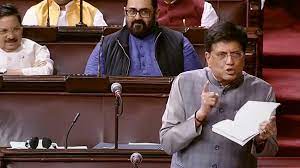
The Jan Vishwas (Amendment of Provisions) Bill 2023 is set to be taken up during the ongoing Monsoon Session of the Parliament.
- The Bill was tabled in Parliament by the Union Ministry of Commerce and Industry (December 2022) and then referred to a Joint Parliamentary Committee.
Provisions of the Bill:
- Decriminalising: 180 offences across 42 laws governing environment, agriculture, media, industry and trade, etc.
Completely remove/ replace imprisonment clauses: With monetary fines. - Compounding of offences in some provisions.
- Removes all offences and penalties under the Indian Post Office Act, 1898.
- Changes in grievance redressal mechanisms: Appointment of one or more Adjudicating Officers for determining penalties.
- A periodic revision of fines and penalties: An increase of 10% of the minimum amount every 3 years for various offences in the specified Acts.
Objective of the Bill:
- To redefine the regulatory landscape of the country with decriminalisation of minor offences under 42 Acts.
- To reduce compliance burden and promote ease of living and doing business in the country.
World Cities Culture Forum : First Indian City To Join

Bengaluru has become the first Indian city to join the World Cities Culture Forum (WCCF), an organization founded in 2012 by the office of the Mayor of London.
- With 40 member cities already in its portfolio, Bengaluru becomes the 41st member of the forum.
- The city’s inclusion was attributed to its dedication to an inclusive and globalized culture.
- The WCCF will collaborate with the Unboxing BLR Foundation, and together, they plan to organize a ‘city festival’ to facilitate the exchange of cultural learning as part of the forum’s global outreach.
- Bengaluru is seen as a microcosm of the new aspirational India, showcasing a vibrant design and theatre community, numerous museums, and a cosmopolitan food culture, which will be highlighted and structurally presented through the WCCF platform
Registration Of Births And Deaths (RBD) Amendment Bill, 2023:

The Registration of Births and Deaths (RBD) Amendment Bill, 2023, proposes to create digital birth certificates that will serve as comprehensive documents for various purposes.
- It aims to eliminate the need for multiple documents to prove the date and place of birth.
- The Bill introduces significant amendments to the Registration of Births and Deaths Act, 1969.
- Provides for the appointment of a Registrar-General, India for issuing general directions for registration of births and deaths.
- Create a National and State level database of registered births and deaths which would help in updating other databases.
- The Bill makes it mandatory for States to register births and deaths digitally on a centralized portal called the Centre’s Civil Registration System (CRS).
- Medical institutions will be required to provide a certificate stating the cause of death to the Registrar.
- The digital birth certificate will be used for admission to educational institutions, driving licenses, government jobs, passports, Aadhaar, voter enrollment, and marriage registration.
The Biological Diversity (Amendment) Bill 2021:

The Lok Sabha passed the contentious Biological Diversity (Amendment) Bill 2021.
- Biodiversity refers to the variety of life forms that exist on the planet.
Biological Diversity (Amendment) Bill, 2021:
- The Bill modifies the classification of entities and activities that require intimation, while also introducing exemptions to certain cases.
- The Bill suggests that approval will be required before the actual grant of the IPR, not during the application process.
- It seeks to exempt registered AYUSH medical practitioners and people accessing codified traditional knowledge, among others, from giving prior intimation to State biodiversity boards for accessing biological resources for certain purposes.
- The Bill removes the applicability of benefit sharing requirements from research, bio-survey, and bio-utilisation.
- The Bill, on the other hand, decriminalizes these offenses and introduces fines ranging from one lakh to fifty lakh rupees instead




